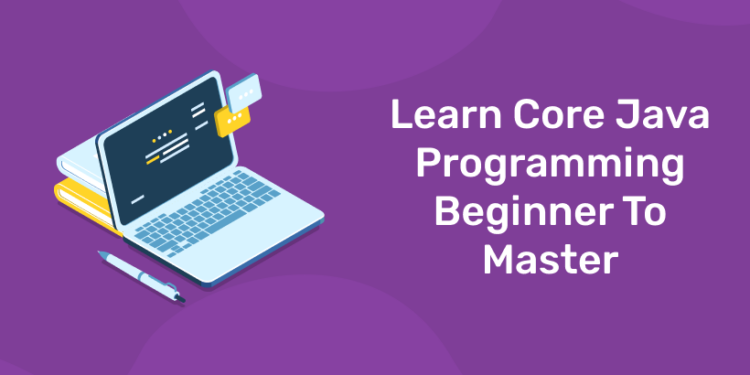Table of Contents
Java is one of the most popular programming languages and platform. It is a platform that helps you to develop and implement programs written in any programming language.
Java is fast, reliable and secure. From desktop to web applications, computer science to game consoles, mobile phones to the internet, Java is used in every nook and corner of our day to day life.
However, to become proficient in any programming language, one needs to understand the basics of that programming language clearly. It is preferred by many engineers for their projects because of their following applications:
- It’s easy
- Purpose-Focused
- Portable
- The platform is independent
- It is safe
- It’s solid
- Architecture is neutral
- Translated
- High performance
- Multithreaded
- Distributed
- Power
Learn to code from industry experts! Enroll here!
Description of the Course Offered
- The course contains features of JAVA, Java SE
- The concept of systems is made simpler and easier.
- The whole course is illustrated with real-life examples.
- This course is designed to familiarize you with JAVA Programming in detail.
- By the end of the lesson you will understand Java better and you will be able to build your own applications.
- After completion, you will be as productive as a software engineer.
- The lesson is taken from the basics to all the features in JAVA.
- Basic topics such as – Methods, Asset Management and Inheritance are explained.
- Features such as – Multithreading, AWT, Swing, Collection Framework and Networking are also integrated in a detailed way.
Who should opt for the course?
1: What is the default value of a boolean in Java?
- For beginners in the java program, who wants to learn in-depth of java planning
- This course is especially important for beginners and intermediates who want to improve their professionalism
- Students who want to learn java completely
Explore Free Coding Courses !
Take your first step toward mastering in-demand skills, acing interviews, and securing top-tier jobs with Entri's free coding courses.
 Explore Free Courses Now
Explore Free Courses Now
What will you get from this Java Course?
In this Java course for beginners, you will learn the basics of Java programming such as Java platform, JVM, how to install Java, OOPS concepts, variables, category, object, arrays, cables, command line arguments, garbage collection, legacy, polymorphism, virtual connector, builder, packages, etc. You will also learn advanced concepts like switch-case, tasks, multithreading, swing, files, API, Java Spring, etc., in this Java basic guide for beginners.
This free Java course for beginners is designed for beginners with little or no Java knowledge. These Java notes for beginners will help beginners to learn Java online for free.
Why should Java Programming be learnt?
Here are some reasons why you should learn Java:
- Java is very easy to learn.
- Java developers are required, and it is easy to find a job as a Java editor.
- It has a great collection of open source libraries.
- Java is free.
Power up your career with Entri Elevate – Full Stack Development Course!
What are the Advantages of Learning a Java Course?
Here are the benefits of Java:
- Java is object focused
- It has an independent platform.
- You can easily write, compile, and debug programs compared to other editing languages.
Explore Free Coding Courses !
Take your first step toward mastering in-demand skills, acing interviews, and securing top-tier jobs with Entri's free coding courses.
 Explore Free Courses Now
Explore Free Courses Now
What are the Advantages of this Course?
The following are the major Java Programming language applications:
- Mobile Applications
- Web Applications
- Web servers and applications
- Business Applications
- Embedded applications
- Desktop GUI applications
What to Learn Java Course?
So, below are some of Java’s basic formats that will help you get the kick start your journey to learning java:
- Java Environment: The Java environment consists of three main components, namely:
- JDK
- JRE
- JVM
To Learn about setting a Java Environment, Click Here: Setting a Environment in Java
2. Java Basic Syntax: Every programming language has its own set of rules that must be published, interpreted and implemented in its components. Reading and learning about them all together is difficult. So here is an easy method to print “Hello World” in Java. During this process, major components and their syntaxes are clearly defined.
Learn about the “Hello World” print in Java here: Starting the Java program with “Hello World” example
3. Comments in Java: In the program, comments contribute in making the program easier to read by people by posting the relevant code details and the proper use of comments makes editing easier and easier to find bugs. The comments are ignored by the compiler while compiling the code.
To Learn about “comments in Java” Click here: “Comments in Java”
4. Types of Data in Java: Each variable in Java has a data type associated with Java. Each type of data requires different amounts of memory and has a specific function that can be performed on it.
Learn about different types of data in Java here, Click Here: “Data types in Java”
5. Variables in Java: Variables are the name given to a memory location. It is the last basic unit in the system.
Learn more about Java variables here: “Java variables”
6. Java Keywords: Keywords or Retained Keywords are words that are used in a specific internal process or to represent predefined actions. Therefore these words are not allowed to be used as dynamic words or objects. Doing so will result in an error in the compilation time.
To Learn more about Java Keywords, Click here: “Java Keywords”
7. Java Operators: Operators are the basis for any programming language. The Java programming language is therefore incomplete without the use of operators. We can describe operators as signals that help us perform certain mathematical and logical calculations on operands. In other words, we can say that the operator operates operands.
To Learn more about Operators in Java, Click here: Java Operators in Java
8. Making Decisions (Control Statements) in Java: Making decisions on programs is like making decisions in real life. In the system we also deal with certain situations where we want a particular code block to be used when a particular condition is fulfilled. Planning language uses control statements to control the flow of program performance based on specific circumstances. These are used to create a stream of development and branch based on changes in the system environment.
To Learn in detail about Java Decisions, click here: “Control Statements in Java”
9. Loops in Java: Looping in programming languages is a feature that simplifies the execution of a set of commands / tasks over and over again while the context checks for authenticity. Java offers three ways to create loops. Although all methods provide the same basic functionality, they vary in their syntax and time to test status.
To Learn more about Loops in Java, Do Click here: “Loops in Java”
Be it playing games, withdrawing money from ATMs, or shopping online or booking a plane ticket; Java code is helpful for all of these activities. Java is a strong and secure language and that is what makes it a favorite for developers to do such projects. Being able to write code in Java opens the door to many opportunities. So configure and try these projects to build your profile in Java.
Want to learn Java completely before starting your first Java project? The Java Programming Masterclass course at the Entri can be your first step.
Enroll in our certificate program in Full Stack Web Development!














